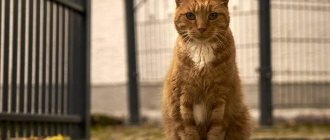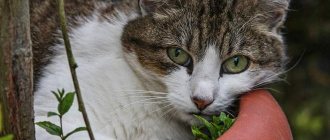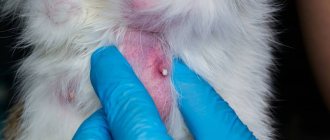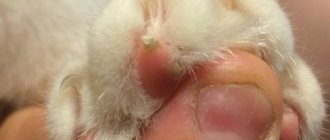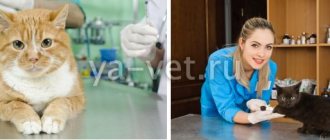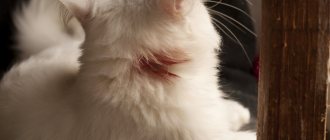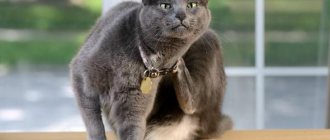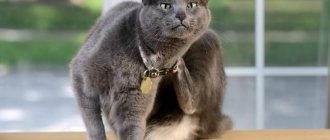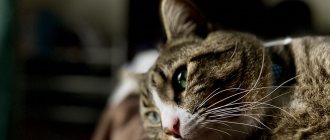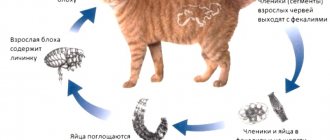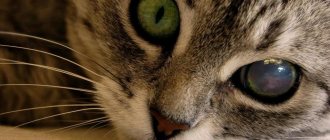Healthy cats spend many hours licking and biting their fur to remove dirt and debris. So, if your cat's fur is oily and matted, something is wrong. Behind the problem will be health problems, physical or emotional.
An obese or arthritic cat will be physically unable to groom, resulting in an oily, lumpy coat. Tooth pain will also make your cat reluctant to groom itself. Medical explanations include hyperthyroidism, diabetes and skin conditions. Additionally, lack of self-care may be an early sign of cognitive dysfunction.
An unkempt coat will bother your cat, so you should help with its daily grooming. You will also need to find out why your cat has oily and lumpy fur so that steps can be taken to correct the problem.
Obesity
As cats get older, they naturally become less active. Play is less attractive and cats are less interested in exploring wildlife and climbing trees. Cats prefer to find a quiet corner and sleep all day.
It's all part of the aging process, but it's important to monitor your older cat's BMI. If your cat exercises less but consumes the same amount of calories, weight gain is inevitable.
You will need to reduce your cat's caloric intake or promote weight loss. Obesity puts pressure on a cat's heart and joints. Additionally, the increased risk develops into feline diabetes. The Journal of Feline Medicine and Surgery considers older male cats to be at highest risk for diabetes.
© shutterstock
Any cat that is overweight can develop diabetes. This causes hormone fluctuations in the cat's body, leading to oily hair buildup. Even if your cat is not diabetic, being overweight will affect her ability to groom. Grooming is cardio exercise for cats. An overweight cat will quickly become exhausted and give up.
An overweight cat may also be physically unable to access certain parts of its body. Healthy cats are mobile and able to assume different body positions. Excess weight makes this impossible, so hard-to-reach areas of your cat's fur will become greasy and clumpy.
Fungal skin infections
Yeast is a normal resident of the skin of humans and cats. They concentrate near the sebaceous glands and feed on sebum. Under unfavorable conditions, disruption of the secretion of the sebaceous glands, stress, allergies, yeast actively multiplies, and dandruff becomes noticeably more numerous. The cat's fur becomes covered with white flakes and becomes dull and unhealthy in appearance. Sometimes there is general itching.
Fungal seborrhea can be dry or oily. With oily seborrhea, in addition to dandruff, the owner notices that his pet has greasy, sticky, hair hanging in icicles. In this case, the cat does not cope with its grooming and, despite regular licking, the condition of the coat does not improve.
Arthritis and joint pain
Older cats are at risk for developing osteoarthritis. This rigidity will result in the cat being unwilling or unable to groom. The Journal of the American Veterinary Medical Association found symptoms of arthritis in 90% of cats 12 years of age and older.
You may not immediately notice that your cat has arthritis. Cats are good at hiding discomfort. If a cat cannot walk without limping, it will choose not to move. The appearance of external signs of discomfort is considered by cats as weakness.
Arthritis cannot be prevented. Cats experience pressure on their joints when they are young and active. This eventually takes a toll on the body when collagen production slows down, so be sure to treat your cat's arthritis pain.
Massage your cat's joints and give her healthy supplements. Provide your cat with a soft, warm bed in which to relax and encourage her to move around.
Poor living conditions, lack of hygiene
Poor living conditions for cats include:
- crowded housing (many cats in a house or apartment),
- irregular cleaning of litter trays,
- dirty bedding,
- lack of regular treatments for internal and external parasites,
- lack of veterinary care.
All this leads to constant stress and various animal diseases. Ungroomed fur and dandruff are the first signs that your cat needs better care.
Toothache
If a cat is experiencing toothache, it will not want to groom itself. A cat with dental problems, in addition to refusing to groom, will have the following symptoms:
- Reluctance to eat or drink
- Stained and discolored teeth
- Swelling around the mouth
- Black gums
- Bad breath
Take action at the first sign of toothache, as gum disease will be the cause of the problem.
If left untreated, gingivitis leads to periodontal disease. This will be permanent degradation of your cat's teeth that cannot be cured. The best you can achieve at this stage is pain relief. A cat with periodontal disease will have regular flare-ups, so grooming will stop and this will be the reason why the coat is oily.
Self-diagnosis
If you are unable to visit a doctor immediately, you can determine for yourself what caused the dandruff. Sometimes this is easy to understand by characteristic signs:
- light yellow scales - the cause is an allergic reaction, sunburn, or there are problems with internal organs;
- black scales - indicate an infection in the body, a fungal infection, a parasitic infection;
- dandruff collects near the tail - a sign of burns from prolonged exposure to the sun, fungus, and is also provoked by excess weight and insufficient hygiene;
- dandruff collects near the tail and lower back - a signal for the treatment of helminthiasis and joint diseases;
- dandruff, which alternately leaves tracks on the paws, face and back, is a symptom of subcutaneous mites.
If self-diagnosis is difficult, you doubt your diagnosis, or there are other warning signs besides dandruff, be sure to take your animal to the veterinarian! Only he will be able to correctly determine what causes dandruff and prescribe the necessary treatment.
Depression
If your cat is withdrawn and refuses to eat, depression is likely. Depressed cats lose all interest in grooming themselves. Causes of depression in cats:
- Major Lifestyle Changes
- Missing former owner or other cat
- Chronic pain
- Boredom
- Loneliness
Don't wait until your cat's depression goes away, as there is no way to know how long it will take. Improve your cat's lifestyle with a range of incentives and make sure she sticks to a consistent routine.
Treatment
Providing first aid to a pet in a timely manner can save its life. If there is a fracture, the cat should be placed at rest and carefully transported in a carrier, taken to a veterinarian. After the examination, an x-ray is taken and the necessary medications are prescribed. In some cases, a cast is applied.
If scratches and wounds occur or hair loss occurs in the tail area, sulfur ointment is used, which is sold at any pharmacy. It does not dry out the skin and promotes rapid healing.
The most common problem in domestic cats is worms. Anti-inflammatory agents and a proper diet with the addition of vitamins can help remove them, which will not only have a beneficial effect on health, but will make the coat smooth and silky.
Skin diseases
Cats can get fungal skin infections that damage their fur, such as ringworm and seborrhea. Fungal diseases are most common in outdoor cats. When a cat wanders outdoors, it may encounter other infected felines. These problems can cause cats to have oily fur.
© shutterstock
Bacterial skin infections
Dermatitis is a common disease in cats. Sometimes dermatitis affects only the superficial layers of the skin, and sometimes it affects the deeper layers of the dermis. Dermatitis is most often local in nature, that is, it develops focally, affecting one or more areas on the body. Superficial pyoderma is accompanied by dandruff and itching, deep pyoderma can become wet, sore and covered with purulent discharge. These pathologies necessarily require treatment, often long-term antibiotic therapy in high doses, since otherwise antibacterial drugs do not penetrate the skin and do not affect the flora that causes pyoderma.
Parasitic infestations
A buildup of fleas and ticks will have a detrimental effect on your cat's coat. These parasites attach to your cat's skin, causing irritation. The cat almost constantly bites and scratches its fur in an attempt to relieve the itching. This will ruin the appearance of the fur, probably making it greasy.
Unfortunately, preventative treatments can also cause greasy and lumpy coats. This will happen due to the chemicals released by the medicine. The problem is usually limited to the shoulders where treatment is performed. If this happens, switch to another brand.
Parasites can also cause secondary health problems. Seborrhea can be caused by flea bites, as well as allergic reactions. This is one of the reasons why finding the right preventive treatment is so important.
External parasites
External parasite infestations can cause dandruff and itching. And some parasites can look like dandruff. Allergic dermatitis often occurs in cats when infested with fleas.
, its symptoms are
severe itching
and
scratching
, especially in the back and croup. The fur becomes covered with dandruff, and you can also notice “black dandruff”. Black scales and grains are flea excrement, and in fact, blood digested by them. If the animal is placed on a sheet of white paper and combed, then the “black dander” on the white sheet becomes noticeable, and if you splash water on it, you will see red blood stains on the paper. After such an experiment, the diagnosis of “flea dermatitis” can be considered made.
In addition to fleas, other parasites, such as Cheylithiella
. These are microscopic, less than a millimeter, oval mites that look like clusters of white flecks of dandruff. If you look closely, you can see how these grains move, which is why Cheylithiella is called “stray dandruff.”
Hyperthyroidism
The risk of hyperthyroidism increases as cats age. Hyperthyroidism is a disease of the glands. The thyroid gland is located at the back of a cat's throat. This produces the hormone thyroxine-a, also known as T4.
If your cat lives with hyperthyroidism, thyroxine-a will flood the body. Since this hormone is linked to a cat's metabolism, too much of it will cause a number of side effects. This includes:
- Sudden and unexplained weight loss
- Increased thirst
- Bursts of hyperactive energy
- Diarrhea
These symptoms can be confused with other ailments. Therefore, it is worth paying attention to oily hair, which is the first sign of hyperthyroidism. If hyperthyroidism is diagnosed, your cat will require lifelong oral medications.
sebaceous gland cancer in a cat
I couldn’t make up my mind for more than 2 weeks. Tomorrow we are going to another clinic for tests. Please tell me, if your cat was given anesthesia 2 times 2 years ago (fell from the 5th floor), does the risk of “not waking up” increase with another anesthesia?
Only registered users have the ability to start new topics. Register and log in to the site by entering your username and password on the right side of the window, and you can start a new topic.
Before visiting the forum, read the topic: “How to consult a veterinarian correctly,” as well as the list of answers to frequently asked questions, this will help you save your time and get an answer to your question faster
Pay special attention to the document: Symptoms of animal diseases. Perhaps in your situation you cannot expect an answer on the forum, but you need to urgently call a doctor or take the animal to a veterinary clinic!
Before joining the forum, read the following sections, this will help save your time and quickly get an answer to your question:
Attention! Pay special attention to the document “Symptoms of Animal Diseases”. Perhaps in your situation you cannot expect an answer on the forum, but you need to urgently call a doctor or take the animal to a veterinary clinic!
Poor nutrition
A cat whose diet lacks adequate nutrition will have an oily coat. If your cat's fur is greasy or matted, check the nutritional content of her food. Common problems include :
- Insufficient or poor quality protein
- Lack of or low-quality fats
- Food cooked or served over high heat
- Excessive carbohydrate content
Age-appropriate feeding becomes increasingly important as a cat gets older. Older cats have different nutritional needs. Maintain high-quality protein and keep carbohydrates to a minimum. As obligate carnivores, carbohydrates do not serve a cat's nutritional purpose.
Whenever possible, choose wet food for older cats. Dry foods lack amino acids because they are found in proteins and animal fats. Amino acids are the building blocks of hair follicles in cats.
The influence of diet on skin health and the prevention of dandruff.
Proper, nutritious feeding is the key to the health of your pet. The diet of a cat with problem skin must contain essential amino acids, omega-3 and omega-6 unsaturated fatty acids, B vitamins, zinc and vitamin A. These diets include PURINA® PRO PLAN® DERMA CARE for adult cats. The food contains only natural ingredients. A source of protein is salmon, which is less likely to cause food allergies than meat. Fish oil is rich in unsaturated omega-3 and omega-6 fatty acids, which support healthy skin and a shiny, dandruff-free coat. Flaxseed oil has been added to the food, which also nourishes the skin. B vitamins and zinc are important components of this diet; if they are deficient, dandruff may occur. PRO PLAN® ELEGANT ADULT for adult cats with sensitive skin, with salmon is also indicated for cats with problem skin. It contains all the essential nutrients for your pet's healthy skin and shiny coat.
PRO PLAN® NUTRISAVOUR® Derma Plus for cats with sensitive skin, with cod in sauce - an example of a diet for cats that prefer pieces in sauce. Ocean fish included in the food ensures healthy skin and coat. An excellent balanced feeding option for cats is a combination of wet and dry diets in a 30/70 ratio. In this way, the special needs of the pet are met. The products described in the article are perfect for this.
It is difficult to balance a cat's diet at home. The physiology of digestion of the small predator has changed little since domestication. The cat never adapted to eat from the human table, like some other domestic animals. Poor nutrition immediately affects the condition of the skin and dandruff is the first signal that something is wrong with the diet. Complete food from the PRO PLAN line, developed with the participation of veterinarians, allows you to feed your cat correctly, taking into account all its needs.
Cognitive dysfunction
An older cat may have problems with its mental abilities. Behaviors that are considered simply "old age" are now widely accepted as a symptom of cognitive dysfunction. This form of frailty in cats begins to appear at age 10. Cats 15 years of age and older may experience acute symptoms.
As Topics in Companion Animal Medicine explains, feline cognitive dysfunction often occurs alongside other conditions. The most common symptoms are toilet problems and loud howling at night.
If your cat has cognitive dysfunction, she will live in constant confusion. The cat will forget basic tasks, including grooming. You will need to give your cat a helping hand. Take active care of your comb and brush.
Article Author: Richard Parker I'm Richard, I have experience in all matters related to feline health, behavior, grooming techniques and general pet care. Richard graduated with a degree in journalism in 2008. He is the proud owner of 5 adult cats (all adopted stray breeds), including an older cat who is now 20 years old.
The condition of the coat is an indicator of the health of the cat!
The condition of the coat is one of the main indicators of the functioning of a cat’s body. If it is shiny, looks neat, there are no brown spots or greasy deposits on it, the hairs are elastic and do not form bald patches when they fall out, the cat owner has no reason to worry. Any deviation from the norm, especially in combination with other pathological manifestations (for example, indigestion, loss of appetite, lethargy), should alert the owner of the animal and become the basis for a visit to the veterinarian.
Sometimes the unsatisfactory condition of a pet’s coat has nothing to do with its health. The cat's owner himself may be the culprit for its greasiness, tangling, and formation of tangles. If the animal's fur becomes greasy, the hairs get tangled and it generally looks unkempt, perhaps its owner is abusing water treatments, using the wrong shampoo, rarely brushing his tailed friend - in general, he is not properly caring for the cat's coat.
